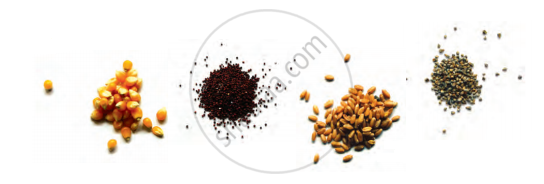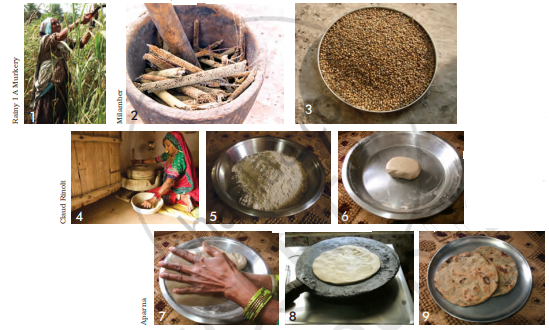Advertisements
Advertisements
Question
The bajra seed saw differences in the way Damjibhai and Hasmukh did farming (for example, in irrigation, ploughing, etc). What were these differences?
Solution
Damjibhai did farming in a different way than how Hasmukh did.
Damjibhai followed the traditional methods of farming. He used bullocks to plough the field. He stored grains to be used as seeds. Hasmukh, on the other hand, started using new methods of farming. He brought a tractor to plough the field. He also bought a motorcycle. He stopped growing those crops that did not fetch a good price in the market. He need not store grains to be used as seeds because he could buy seeds from the market. Expensive fertilizers were used for farming.
APPEARS IN
RELATED QUESTIONS
Have you eaten roti made from bajra or jowar? Did you like these?
In your house what is done to protect grains and pulses from insects?
Which are the different festivals related to farming, celebrated in different seasons? Find out more about anyone such festival and write in your notebook –
The name of the festival, in which season is it celebrated, in which states of India, what special foods are made, is it celebrated only at home with the family, or together with many people.
Find out about the crops - cereals, vegetables, pulses - that are grown in your area. Of those, is there anything that is famous across the country?
Can you recognize these grains?

Hasmukh said, “With profits from our fields, we can progress.” What is your understanding of ‘progress’?
Damjibhai’s son Hasmukh chose to become a farmer like his father. Hasmukh’s son Paresh is not a farmer, but a truck driver. Why would he have done so?
Visit a farm near your area. Observe and talk to the people there. Write a report.
What can you see in each picture on the next page?
In picture 2 you can see the bajra cobs in the mortar (okhli, used for crushing). The cobs are crushed with a pestle (moosli) and the seeds are separated from the cob. You can see the separated seeds in picture 3. Now this work is also done by big machines, like threshers. We call both these different ‘technologies’ – using our hands or big machines – to crush the seeds.
What technology could have been used to cut the stem in picture 1? What do you think is being done in the grinder (chakki ) in picture 4? What ways (technologies) would have been used to do the work shown in pictures 5 and 6? You can see that the dough is ready in picture 6. When do you think a sieve (chhalni ) would have been used? Discuss each step in detail, in any language you wish to use.

What would happen if all the farmers were to use only one kind of seed and grow only one kind of crop?
